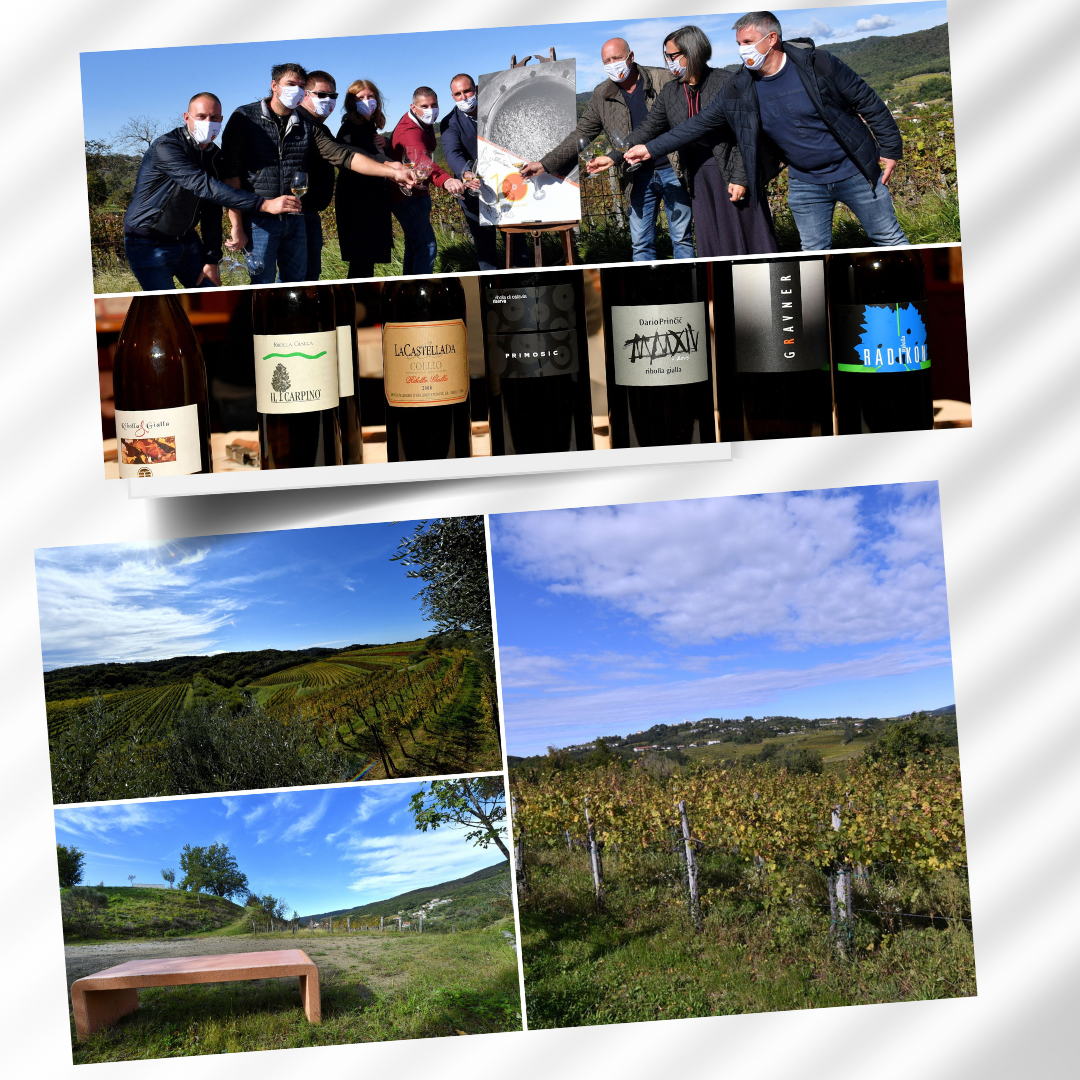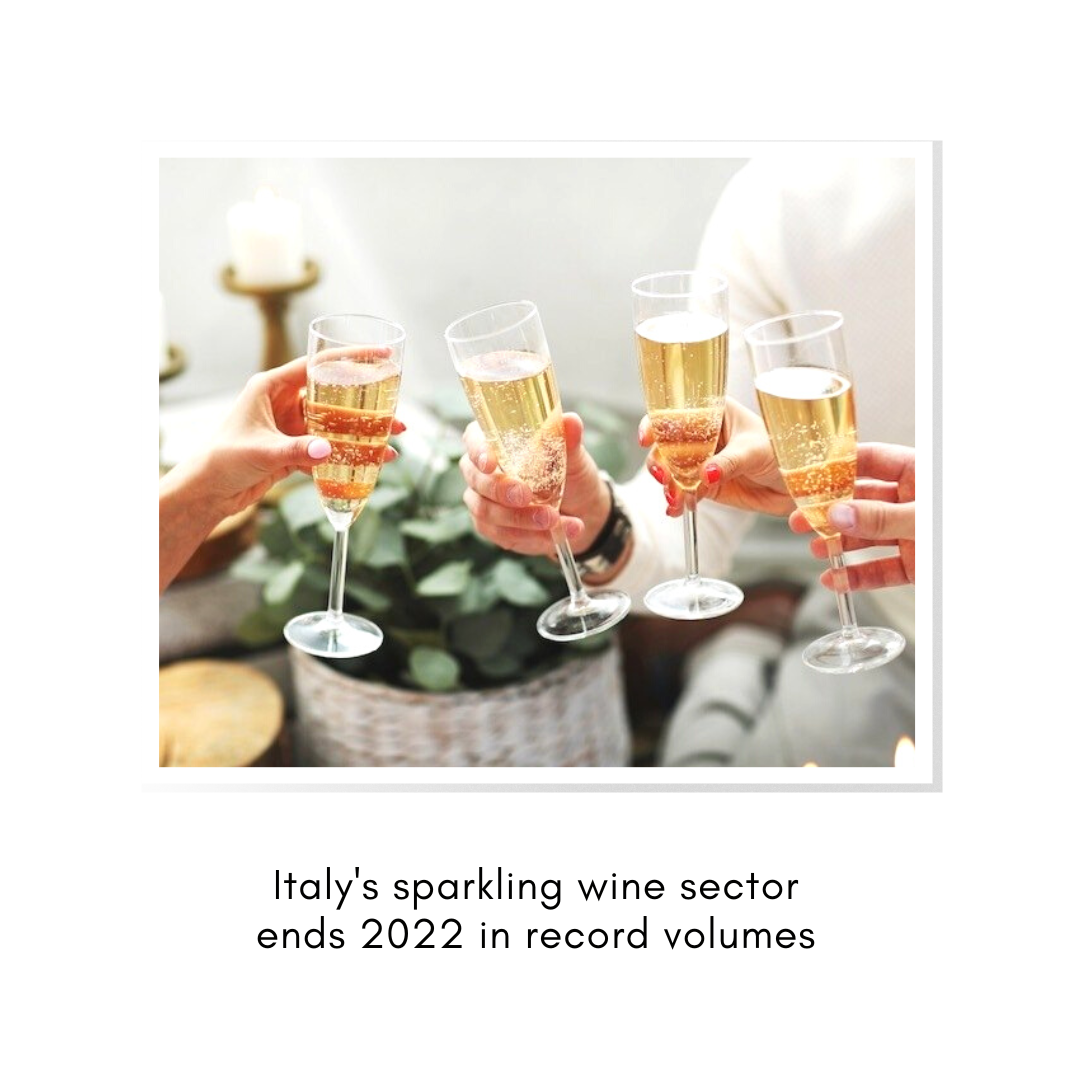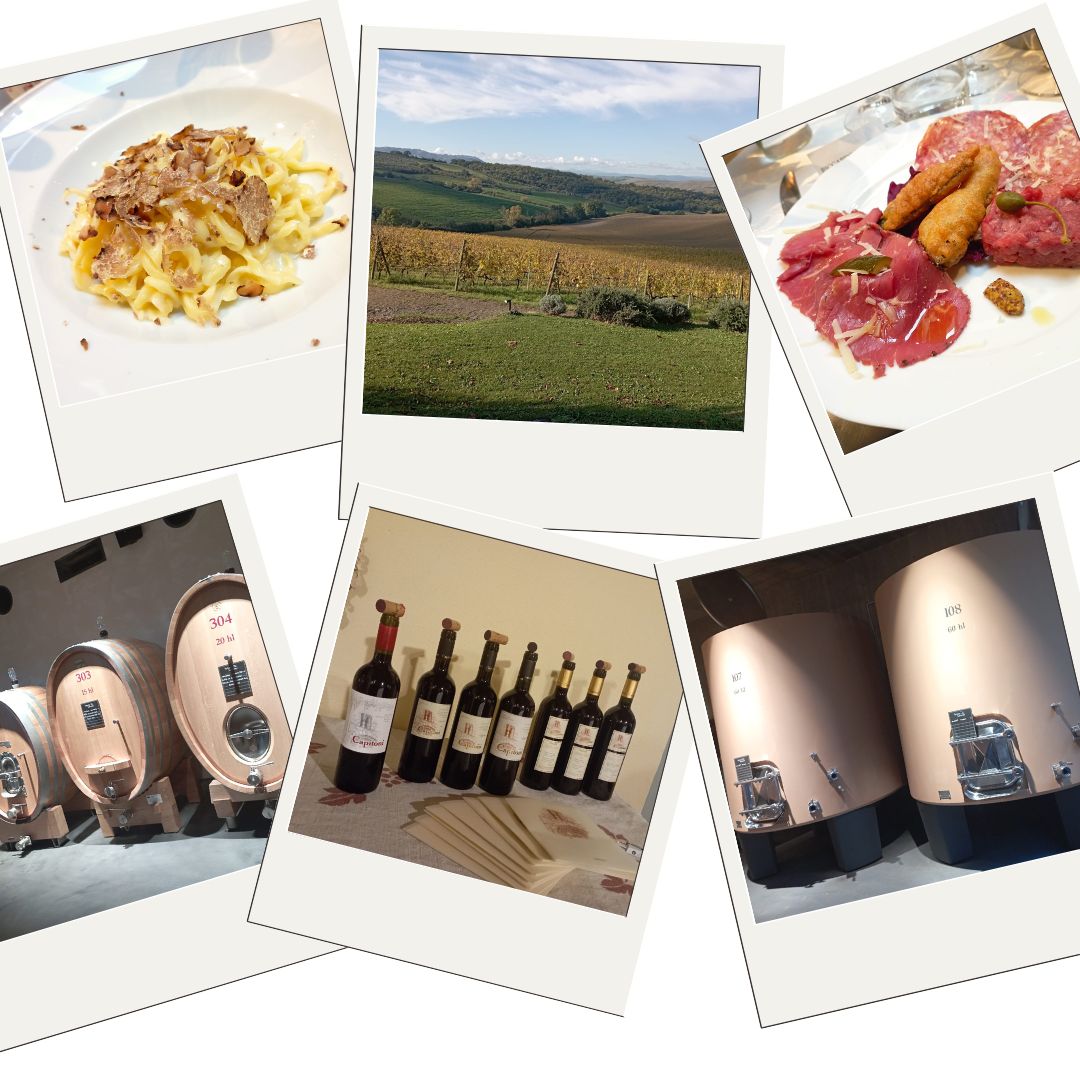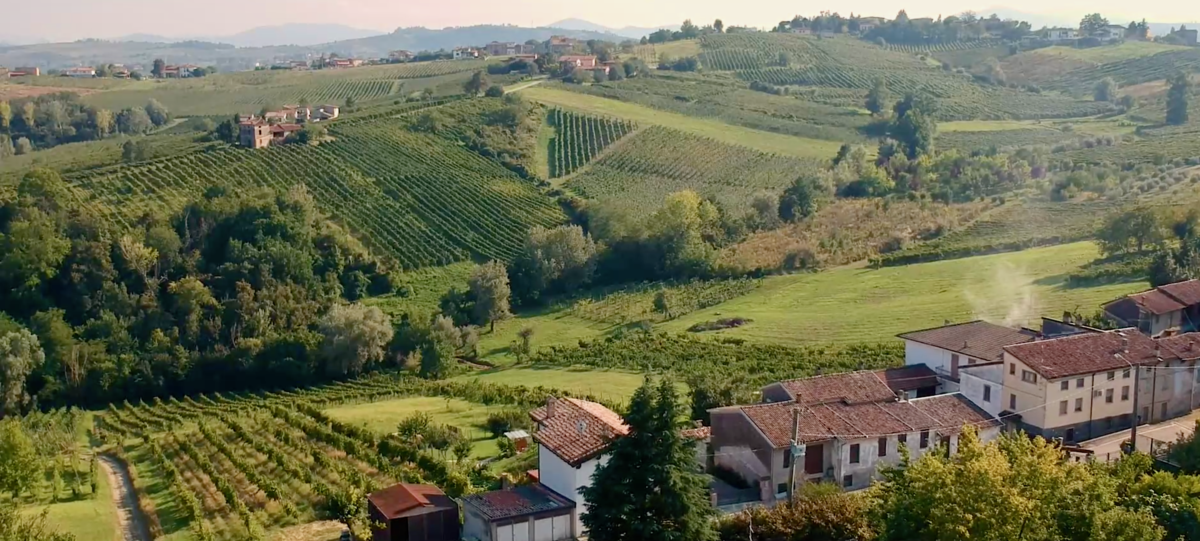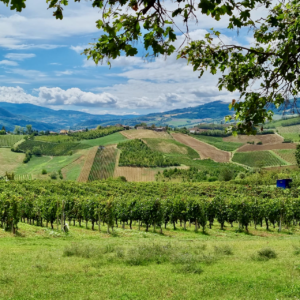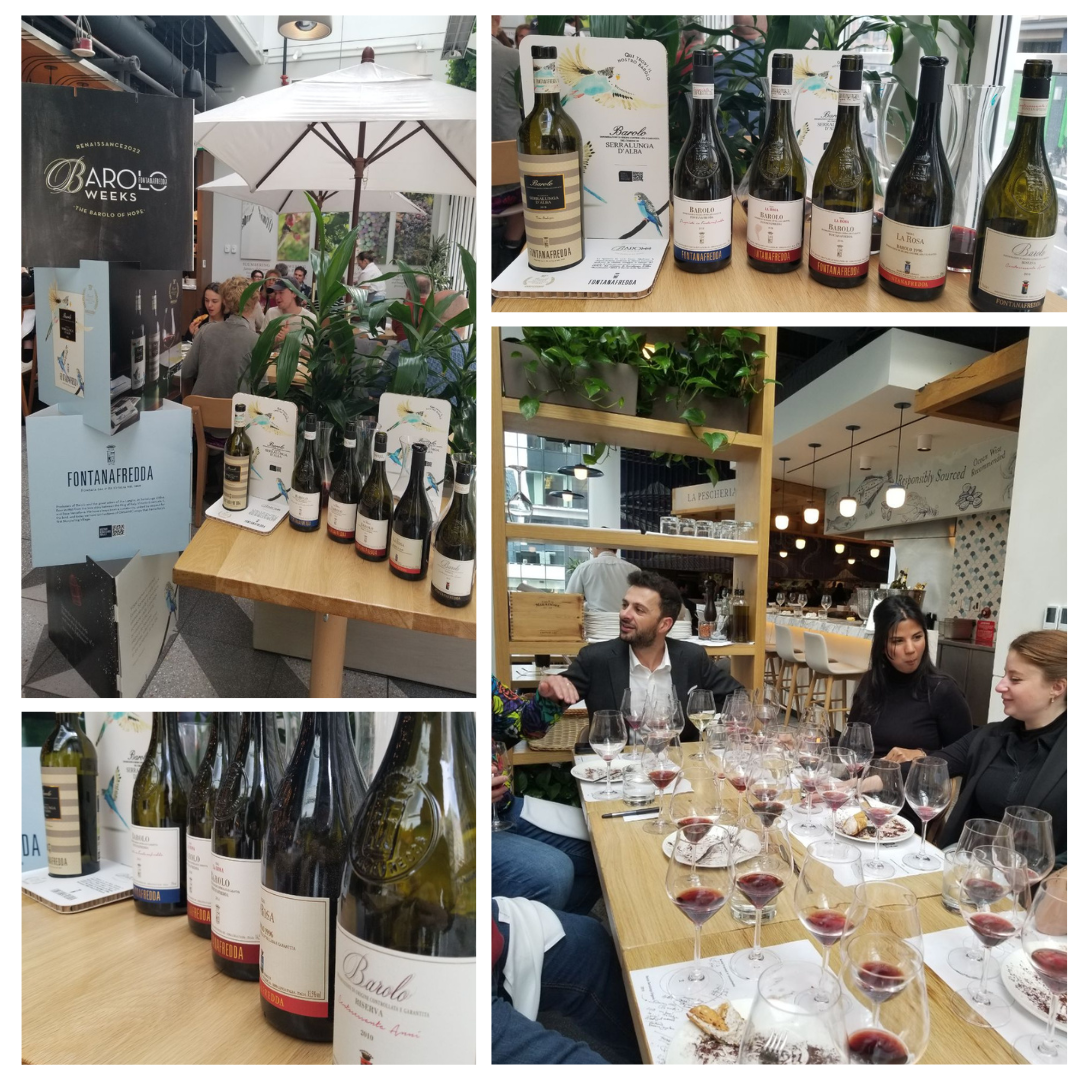Oslavia is located in a tiny corner of northeastern Italy. This small war-torn region has given rise to a truly special place for producing unique wines. Home to 150 inhabitants, the village of Oslavia is just a short walk from the Slovenian border. From the village, you can see the surrounding vineyards and a giant war memorial in memory of the many battles fought here during WWI. In fact, its strategic location would force the area to be divided between the two countries for more than 70 years. It wasn’t until the fall of the Iron Curtain that these two cultures began to heal and grow. Now, most of the road signs are written in both Italian and Slovenian. The local traditions and the food and wine are also a testimony to their unique blend of cultures. It is perhaps no surprise that this land has also attracted some of the most revolutionary and strong-minded winemakers who show a profound respect for this land.
Climate and Soil Give Rise to Unique Wines
Hidden in the eastern foothills of the Collio wine region, Oslavia’s location was not only strategic in battles, but it is also ideally located between the Alps and the Adriatic Sea. The Alps protect it from the cold winds from the north while the Adriatic helps to moderate temperatures. The Oslavia hills are around 150 -190 meters and represent a very heterogeneous environment as far as temperatures, exposure and orientation of the slopes are concerned. This special place also benefits from two other key ingredients: the “Bora” winds and the “Ponca” soil. The Bora is a north-easterly wind that sweeps down through the Isonzo River Valley providing proper ventilation for the grapes and a healthy range in temperatures between day and night. This diurnal shift ensures the grapes do not ripen too quickly, allowing their flavor compounds to develop fully. The Ponca is a type of soil in the Collio region typically known to produce elegant wines. Formed 45 million years ago under the sea it is a blend of marl and sandstone that is low in fertility but rich in mineral content due to its marine origins. Concentrations of Ponca can vary drastically from one vineyard location to the next, offering an incredible array of wines depending also on the type of vine planted in it. These variations in soil are one of the reasons why Oslavia is defined as a distinct wine area.
Ribolla Gialla: The Signature Grape of Oslavia
The Ribolla Gialla grape has become synonymous with Oslavia wines precisely because it thrives in this terroir. Known as “Rebula” just across the border in Slovenia, Ribolla Gialla is an ancient variety with thick skins and long but compact grape clusters. It needs good ventilation from the Bora winds and prefers lower fertility soils like Ponca which helps concentrate the flavours but also provides a distinct minerality. Because of the unique combination of soil and climate producers here believe that Ribolla Gialla expresses its best qualities in Oslavia which is why it has become the signature grape of the region. With its high acidity, it will produce light, floral and crisp wines if made with little or no skin contact. However, if fermented and macerated with the skins for longer periods such as in Oslavia, the wine takes on more structure, soft tannin, and flavors from Ribolla’s thick skins. This produces a completely different style of wine that can have deeper colors from golden yellow to amber. These white wines made with extended skin contact are broadly referred to as “orange” wines, a term that can be confusing to some. This is why many proponents prefer to call these “skin-contact wines”. There are other native and international grapes grown in the region as well. For native whites you will find Tocai and Malvasia whereas the native reds showcased by producers are mainly Refosco, Tazzelenche, Schiopettino and Ribolla Rosso. Some producers also use international grapes like Sauvignon Blanc, Chardonnay, Pinot Grigio, Cabernet Sauvignon, Cabernet Franc and Merlot.
A Secret Spot for an Authentic Wine Vacation
Just a short drive from Venice and Trieste airports, Oslavia is a great place to start your exploration of the Friuli-Venezia Giulia wine region. Follow the Soca River as it winds its way up from the Adriatic to the town of Gorizia nestled against the foothills of the Julian Alps. Its 11th-century castle and alluring palaces earned the town a reputation as the “Austrian Nice”. The vibrant market, restaurants, and cafes have plenty to offer those in search of local specialties. Take some time to explore the beautifully preserved castle and the Coronini Cronberg Palace where King Charles X, the last king of France, stayed and then died.
It’s then only a 10-minute drive into the heart of the wine country, where it’s easy to visit small, family-run wineries and their vineyards. Many offer agritourism experiences with B&B accommodation and/or home-cooked meals. Most welcome visits if arranged in advance.
The producer’s association APRO has created a self-guided walking tour called the “Orange Bench Trail” which connects all 7 winery members. The trail is marked by orange circles and one orange bench per winery. This orange bench trial is an open invitation, as open as the acronym for the producer’s association itself APRO, which literally translated means “I open”. Not only do the producers open their doors and bottles of wine to visitors, but they also open their minds and their hearts. There is a respect for the past and a vision for the future. The trail is an open invitation to reflect not only on these but also on the landscape.
For those wanting to learn more about Oslavia’s strategic role in World War I, you can visit the impressive Sacrario di Oslavia. Built like an imposing fortress, this ossuary is a memorial to the over 50,000 Italian soldiers who fell during the battles of Isonzo. It stands on a 150-meter hill and was inaugurated by Benito Mussolini in 1938.
Traditionally in October wine travelers and enthusiasts from all over the world come together to participate in RibolliAMO; a play on words in Italian essentially meaning “We love Ribolla”. This event went from being an exclusive gathering for just a handful of journalists to an international destination open to all. It was designed to be a multifaceted event with Oslavia at its center. An Orange Symposium was held with many speakers bringing together wine experts, published authors and journalists as well as a cinema director. Its rich program included a screening of the documentary “Call it Amber” and a guided tour of the Orange Benches by a naturalist and history expert.
United Friends with Different Visions
Oslavia and its producers are credited for bringing fine wine produced with Ribolla Gialla to prominence. Not only did they recognize the land as an ideal terroir for this grape, but they were inspired by their ancestors’ winemaking techniques.
In the late 1990s two pioneers, Joško Gravner and Stanko Radikon started to experiment with techniques such as fermentation on the skins for longer periods using only native yeasts, no use of sulfites during the winemaking process and aging in large amphoras. Several other producers started experimenting in the same area, each with their own strong personalities and their own styles and determination. However, they all agree on a couple of key elements: The Oslavia terroir is the finest expression of Ribolla Gialla answering diligently to each producer’s way of thinking. So, they let nature do what it does best with as little intervention as possible in the winemaking process.
Today there are 7 producers in Oslavia that make up the Ribolla of Oslavia Producers’ Association (APRO). The association was founded in 2010 founded from a desire to protect the territory, its land, and its people. Their symbol is the “orange grape” and their goal is to continually invest in the people and land they live in.
Fiegl
Fiegl’s mission is to tell a story about the Oslavia territory using wine as the means of expression and to continuously invest in the cultivation of their vines to improve their quality. Founded by three brothers Alessio, Giuseppe and Rinaldo, the winery represents two generations of Fiegl’s. The new generation of sons, Martin, Robert e Matej, have completed their oenology studies and bring new passion, enthusiasm, and innovation to the family business. Their approach to viticulture is to create the least environmental impact possible with respect for the vine’s natural abilities. Vineyards are maintained with eco-friendly products, complete grass cover between rows and manual harvesting techniques.
Foundation year: 1782
Ownership: Famiglia Fiegl
Total annual production in bottles: 220,000
Hectares of vineyard: 40
Key varieties: Ribolla Gialla, Pinot Grigio, Sauvignon, Merlot
Address: Località Lenzuolo Bianco 1, Oslavia 34170 Gorizia
Phone: +39 0481 547103
Web site: www.fieglvini.com
Email: visite@fieglvini.com info@fieglvini.com
Gravner
Joško Gravner is a third-generation winemaker, Slovene by heritage. The family first started bottling wine in 1973. Shortly afterward, Joško, then in his early twenties, took over. In 2014 he was joined by his daughter Mateja. In the 1990’s Gravner pioneered a return to ancient winemaking in large amphoras buried underground. All their seeding, pruning and harvest are done biodynamically according to the moon phases.
Foundation year: 1905
Ownership: Gravner Francesco
Total annual production in bottles: 18,000- 35,000
Hectares of vineyard: 18 (15 productive; 2,8 planted in 2021)
Key varieties: Ribolla Gialla (90% surface) Pignolo (7% surface)
Address: Az. Agr. Gravner , Loc. Lenzuolo bianco 9 – Oslavia 34170 Gorizia
Phone: +39 0481 30882
Web site: gravner.it
Email: info@gravner.it
Il Carpino
Founded in 1987 by Franco Sosol who transformed his father-in-law Silvio’s small bulk wine operation into today’s estate. Originally an automobile repairman Franco picked up winemaking in his spare time from watching Silvio. Now he is joined by his wife Anna and children Naike and Manuel. Over the years they have grown their estate to include 40 acres of vineyards. They produce only white wines.
Foundation year: 1987
Ownership: Family Sosol
Total annual production in bottles: 40,000 – 50,000
Hectares of vineyard: 18
Key varieties: Ribolla gialla, Malvasia, Pinot grigio (vis Uvae), Friulano (exordium), Sauvignon e Chardonnay
Address: Il Carpino, loc Sovenza 14/a, – Oslavia 34170 Gorizia
Phone: +39 340 8320020
Web site: www.ilcarpino.com
Email: ilcarpino@ilcarpino.com
La Castellanda
Named after a hill in Oslavia, La Castellanda was founded in 1985 by Giorgio e Nicolò Bensa who decided to develop their father Giuseppe’s bulk wine production and dedicate themselves fully to winemaking. Since 2009 Nicolò’s sons Matteo and Stefano have joined the team. They practice complete vineyard grassing to promote biodiversity.
Foundation year: 1985
Ownership: Bensa Giorgio e Nicolò
Total annual production in bottles: 20,000–25,000
Hectares of vineyard: 9
Key varieties: Ribolla Gialla, Friulano, Pinot Grigio
Address: Località Oslavia, 1 – Oslavia 34170 Gorizia
Phone : 0481-33670
web site : lacastellada.it
email : info@lacastellada.it
Dario Princic
Dario started his winery in 1993. Before that, he sold his grapes to local wineries. Since 1988 he hasn’t used any chemicals in his vineyards, he started to only use natural fertilizers (cow and horse manure) and copper and sulfur for the spray treatments. In 1999 he started to experiment the maceration of grapes in part of the production, the year after he decided to do it in the whole production. Now the winery is over 10 hectares, all his vineyards are southeast exposure.
Foundation year: 1993
Ownership: Princic Dario
Total annual production in bottles: 35,000-40,000
Hectares of vineyard: 12 ha
Key varieties: Chardonnay-Sauvignon-Pinot Bianco-Pinot Grigio- Ribolla Gialla-
Tocai -Merlot-Cabernet Sauvignon
Address Via Ossario 15/A – Oslavia 34170 Gorizia
Phone +39 0481532730
email dario.princic@gmail.com
Primosic
The Primisic family winemaking dates back to Carlo Primosic, who, at the end of the 19th century, supplied wine merchants from the southern Austro-Hungarian Empire. In the 1950’s they began their own private sales and in 1964 Carlos’s son Silvan was the first to bottle their wine which gained Italian and international recognition after only a few years. The Collio Consortium was founded in 1967, of which Silvan was one of the first members. It is not by coincidence the “Number One” bottle from the Consortium is from the Primosic cellars. Today his two children Marko and Boris run the winery, maintaining the focus on the native and traditional varieties of the area, and striving for a style that favors clear, precise fruit aromas, intense flavors and overall balance.
Foundation year: 1956
Ownership: Famiglia Primosic
Total annual production in bottles: 210,000
Hectares of vineyard: 32
Key varieties: Ribolla Gialla, Friulano, Pinot Grigio
Contact: Marko Primosic
Address: Località Madonnina di Oslavia, 3 – Oslavia 34170 Gorizia
Phone: +39 0481 535153
web site: www.primosic.com
email: info@primosic.com
Radikon
In 1980 Stanko Radikon bottled his first vintage from vines planted by his grandfather. In 1995 he was one of the first winemakers in the region to start macerating his Ribolla on the skins just like his grandfather did. Through experimentation maceration times increased as did and the types of wines macerated on the skins. Today all their wines are macerated for 3 months with the least human intervention possible and with the maximum respect for the soils and nature. After Stanko’s passing in 2016, the winery is run now by his wife Suzana and their children Saša and Ivana.
Foundation year: 1980
Ownership: Radikon’s family
Total annual production in bottle: about 70,000
Hectares of vineyard: about 20
Key varieties: Ribolla; Tocai Friulano, Merlot, Pignolo
Contact: Luisa
Name of the winery: Radikon
Address: Località Tre Buchi 4 – 34170 Gorizia – Italy
Phone: +39048132804
Web site: www.radikon.it
Email: info@radikon.it
#RibollaGialla #Oslavia #wine #amberwine #winetasting #winelover #naturalwine #winemaker #vinrouge #somm #sommelier #winelovers #italy #winemaking #orangewine #biodinamicwine #vininaturali #tasting #finewine 🍷 #winefair #Colliowineregion #AmberWine #winetourism #tourism #winetime #winetours #winedestinations #italianwinelovers #OrangeBenchTrail #Ribolla #RibolliAMO #orangewinefestival

